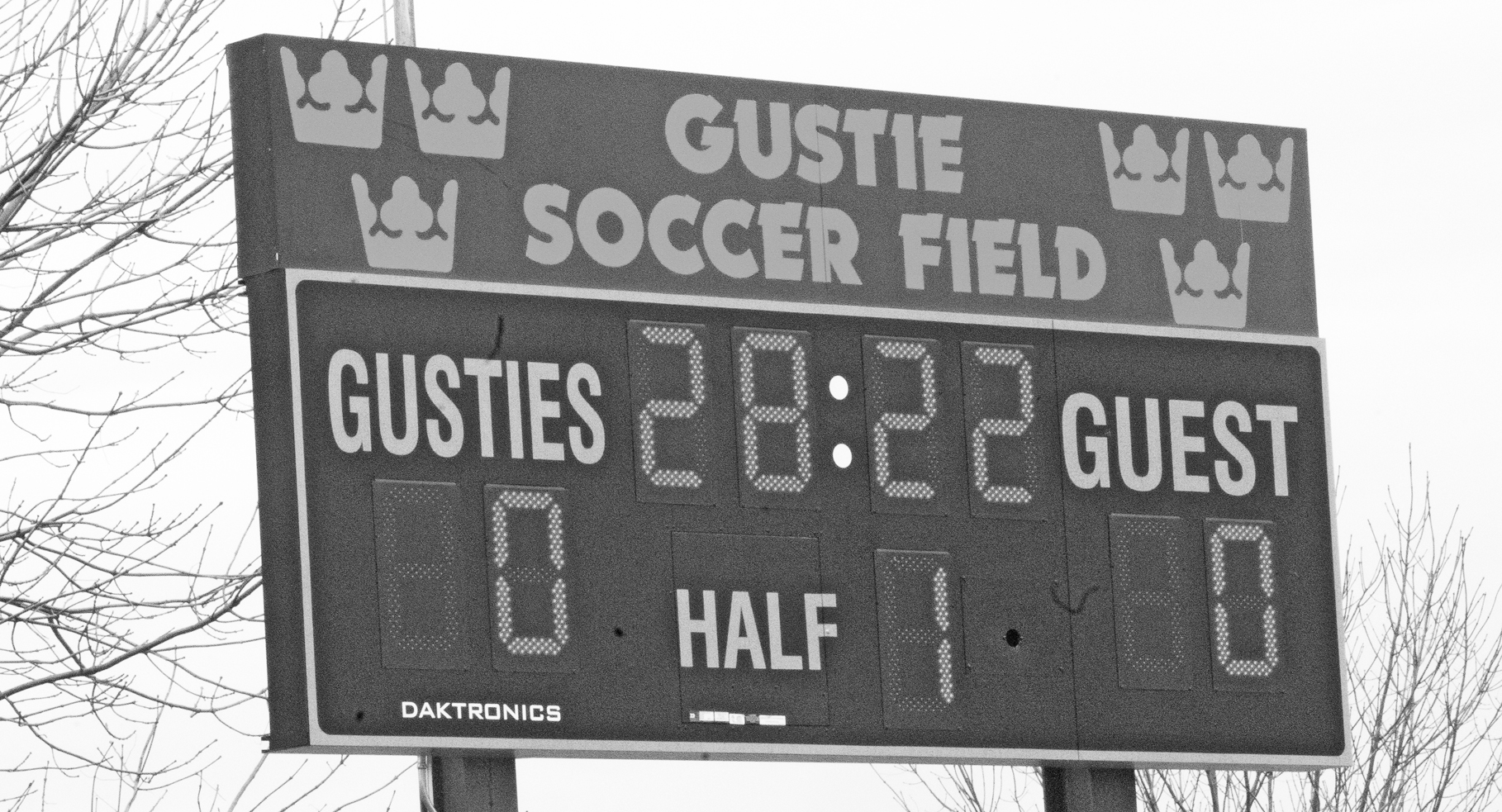…leads to new soccer scoreboard
By the start of the soccer season this year, Gustavus had erected a sorely needed new LED scoreboard for the field. Playing with a dim scoreboard had been difficult for both the teams and spectators, especially when neither the score nor the time clock could be seen past a 45 degree angle. Both of these being essential elements to following a game as well as strategizing, a new scoreboard was a foregone conclusion to Athletic Director Tom Brown.
“I have been hoping we could replace the old scoreboard for the past couple of years. However, it has been tough to find the money to purchase a new scoreboard. Going into this new year I planned to use some of our budget money to upgrade to a new LED scoreboard,” Brown said.
On the other side of campus Sophomore Biology Major Jack Hillesheim was preparing himself to dedicate an entire semester to a project for his Public Discourse class. Communication Studies and Gender, Women and Sexuality Studies Professor Leila Brammer encouraged the class to think of their interests or needs they saw that needed to be met to generate topic ideas for practicing discourse.
“[Brammer] wants you to get involved in the community and practice public speaking through that,” Hillesheim said.
When Hillesheim was having difficulty finding a topic, a friend suggested he work on the new soccer scoreboard project. Having played on the men’s soccer team in the fall, Hillesheim understood the legitimate need for a replacement and wanted to aid the Athletic Department in any way he could.
In preparing his proposal, Hillesheim was required to do research and submit drafts of speech outlines for his class, and he personally talked with a representative from Electro Mech for further information on LED use. In his research, he sought to learn the mechanics behind LED (light emitting diode) bulbs and compare them to incandescents for efficiency and quality. In his speech outline he included the efficiency of an LED (152 lumens per watt) contrasted with that of an incandescent (17) to show that despite the greater expense at the outset, the LED scoreboard would achieve a 60% energy savings over 5 years. This disparity was also reflected in Hillesheim’s calculations of the life spans of the bulbs; 11 ½ years for the LED versus 500 days for the incandescent.
Quality was also a factor that he expressed by quoting Bethany Reeder on varsity scoreboards: “Super-bright 100,000-hour rated LED displays are now the industry standard and make the scores highly visible to everyone at the game.”
Hillesheim saw an opportunity for Gustavus to be an innovator as well by demonstrating their values through their purchases. The community aspect was highly important in regards to the international appeal of the game, deemed the “only true world sport” by sports journalist Sean Wilsey.
The College and the Athletic Department were very receptive to the idea and committed to purchasing a new LED scoreboard through Daktronics for $4,500 once they received their budget for the year. Brown referred to Jack’s proposal as “thoughtful and organized,” yet explained the difficulty he’s had accommodating every student request.
“There have been a few suggestions/inquiries over the past couple of years, but these are tough times financially and our ability to make these extra purchases are very limited,” Brown said.
Yet, because the general interests of both the College and students aligned—the purchase of a new soccer scoreboard—Hillesheim was able to achieve success with his project by contributing to the discussion. His research and his enthusiasm for making a meaningful purchase were important to generate dialogue about the far-reaching implications of mindful consumption and the opportunity consumers have to take a more active role.
